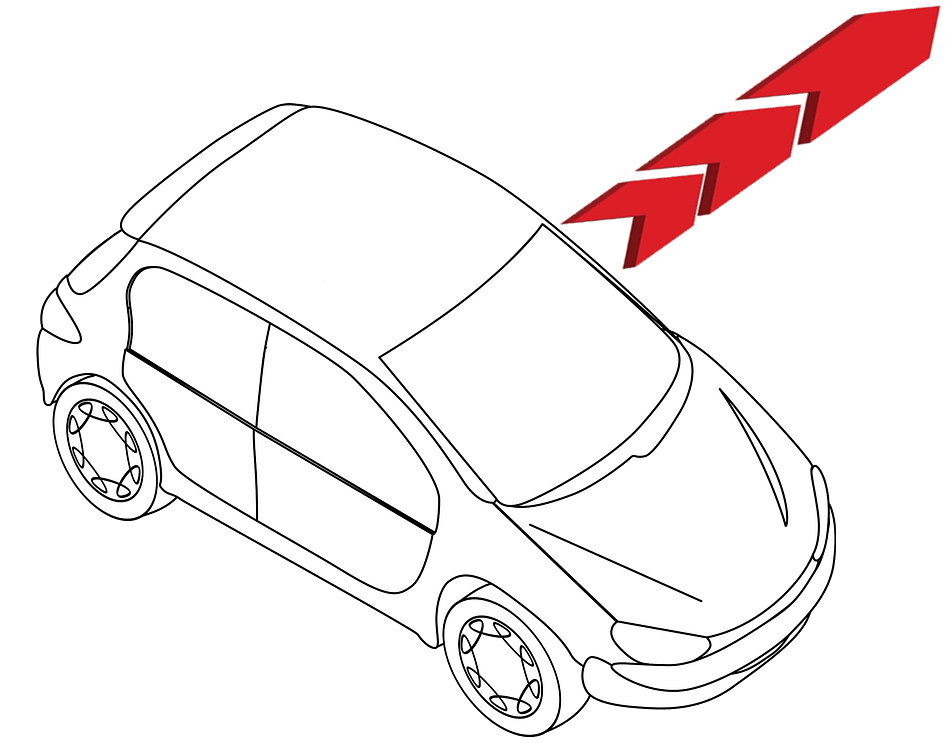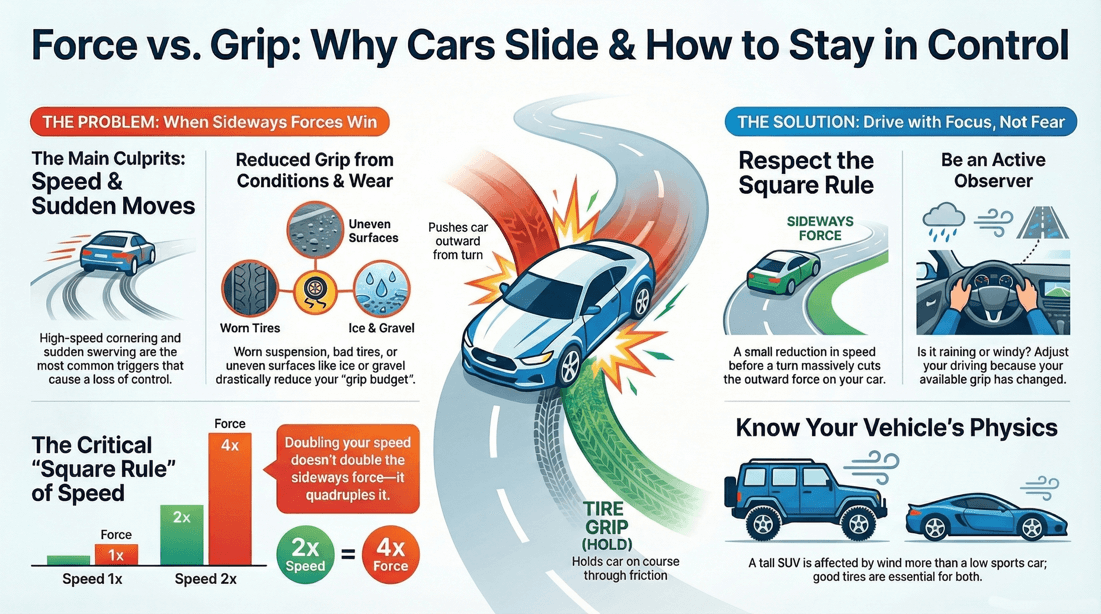Lateral
⫸ Free YouTube Subscription
Lateral forces are a fundamental part of vehicle dynamics, influencing control, stability, and safety on the road. These side forces occur not just during turns but also when changing lanes or responding to sudden shifts in direction or momentum. When a vehicle’s movement generates enough side force to overcome tire grip, it can begin to slide.
What are lateral forces and how do they cause a vehicle to slide? How does tire grip resist lateral motion? What happens when lateral force exceeds the traction limit? How can drivers recognize when their vehicle is approaching a loss of control? What is the relationship between speed, direction change, and side force? What role does vehicle weight distribution play in resisting lateral movement?
This page explores the mechanics of lateral force and its impact on your car’s behavior. By understanding how these forces interact with traction, weight balance, and driver input, you can better anticipate the moment your vehicle may begin to slide. The guidance offered here gives you practical tools to stay in control when side forces become intense, helping to make every drive safer, more responsive, and more predictable.
Listed below are some of the causes of the lateral force that could induce a slide:
High speed cornering.
Sudden change in direction such as swerving.
Weakened suspension when cornering.
Resistance on one side of the vehicle greater than the other side. E.g., riding on a gravel shoulder with one set of wheels while the other set are on the tar.
Tire failure such as a blowout or retread peeling off.
Wheel failure such as a bearing seizing, brake binding or wheel coming loose.
Too much momentum in the front of the vehicle resulting in understeer.
Too much momentum at the rear of the vehicle, resulting in oversteer.
⧋
🛈 Info:
⧋


